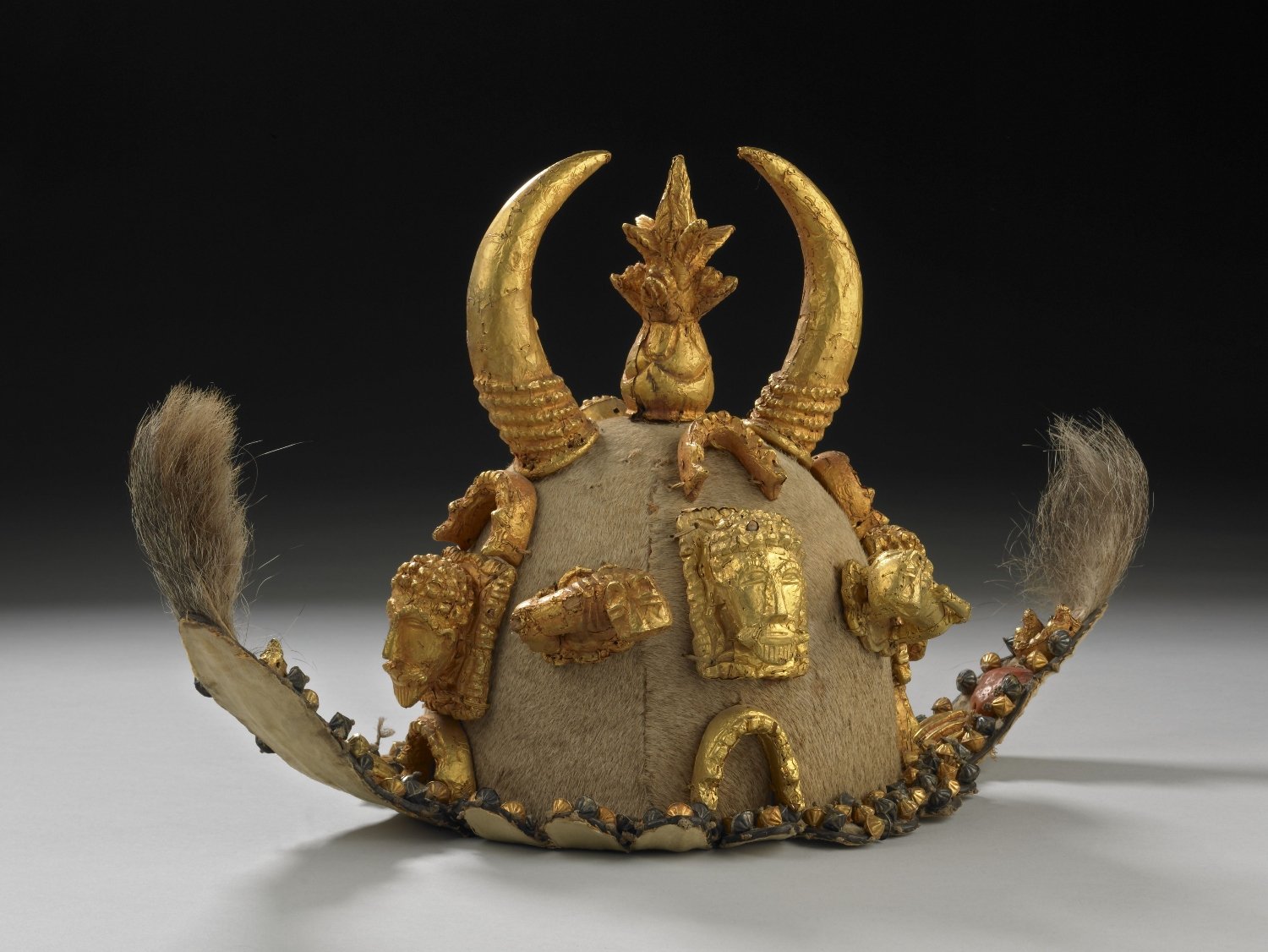
The U.K.’s British Museum and V&A are returning 32 looted gold treasures to Ghana under a long-term loan agreement. These pieces of court regalia include a ceremonial cap and a sword of state that were stolen from the royal palace in Kumasi by British troops during the Anglo-Asante wars of the late 19th century. A formal request for their return was first made 50 years ago in 1974 and this call was renewed last year.
A more permanent restitution plan would not currently be possible under U.K. law. The long-term loan model is a controversial substitute, however, because these agreements perpetuate the idea that the U.K. rightfully owns the contested cultural objects in question and therefore has the right to loan them to their countries of origin. It is for this reason that the Greek government has repeatedly rejected the prospect of being loaned the Parthenon Marbles.
What sets this partnership apart is that it was formed not with Ghana’s government but with the Asante king, Otumfuo Osei Tutu II, who has a ceremonial role but is highly influential and revered within Ghana’s Ashanti Region. He attended King Charles III’s coronation last year. The loaned objects will go on display at the Manhyia Palace Museum in Kumasi, which reopens in April to commemorate 25 years of Osei Tutu II’s reign.
In a report by the BBC, the V&A’s director Tristram Hunt clarified that the agreement “is not restitution by the back door.” The U.K.’s National Heritage Act of 1983 prevents the V&A from transferring ownership of objects from its collection and the British Museum is similarly bound by the British Museum Act of 1963. Hunt did allow, however, that the latest deal struck with Osei Tutu II had managed to “cut through the politics.”
“It doesn’t solve the problem,” he added, “but it begins the conversation.”
The art historian Nana Oforiatta Ayim, who advises Ghana’s culture minister, told the BBC that items like these “have spiritual importance” and that this loan was a promising sign. “They are part of the soul of the nation,” she said. “It’s piece of ourselves returning.”
“There is now a forward motion that is going to be hard to stop, and what this agreement does is buy time to sort some other mechanism out,” commented William Carruthers, a lecturer in Heritage Studies at the University of Essex. “It does also reveal that the national museums do have some form of agency here. Ultimately I suspect there will need to be a change in U.K. law.”
A magnificent horned ceremonial cap, known as a denkyemkye, made of antelope hide and covered in gold ornamentation is among 15 objects being loaned by the British Museum. The V&A is sending 17 objects, including a peace pipe that had a diplomatic function in maintaining strong relationships with neighboring leaders. Further information about the 32 loaned objects and how they ended up in the V&A and British Museum’s collections can be found in a joint statement issued by the two institutions.
After it was revealed in August that over 1,5000 objects had been stolen from the British Museum by one of its own senior curators, many countries came forward to demand the return of looted cultural artifacts. The thefts had remained undetected for years because many of the stolen items had never been catalogued by the British Museum, raising urgent questions about the safety of objects in the museum’s collection.
More Trending Stories:
A Case for Enjoying ‘The Curse,’ Showtime’s Absurdist Take on Art and Media
Artist Ryan Trecartin Built His Career on the Internet. Now, He’s Decided It’s Pretty Boring
I Make Art With A.I. Here’s Why All Artists Need to Stop Worrying and Embrace the Technology
Sotheby’s Exec Paints an Ugly Picture of Yves Bouvier’s Deceptions in Ongoing Rybolovlev Trial
Loie Hollowell’s New Move From Abstraction to Realism Is Not a One-Way Journey